|
|
|
|
Contact:
A wick can really change and even improve the functionality of an alcohol stove.
Note - These are just some of the many DIY alcohol stove options. For more information on different options visit Zen and the Art of the Alcohol Stove and the Templates page.
Wick Function
Wicks can be used for several functions.
Wick Functions:
1. Wicks fuel into a flame - important for ignitions of certain fuel depending on temperature
2. Soaks up liquid fuel like a sponge to reduce spill hazard
3. Works as a platform for fuel, such as when used as a priming bracelet around a stove
4. Mobilizes fuel from one area to another
5. Heat resistant structure for supporting pot, stove parts or as a protective handle for either.
6. Heat resistant insulation.
Flame Wick
For Candles and low volatility fuels, such as lamp fuel and various oils, the wick mobilizes fuel into a flame. This increases the surface area with oxygen and more importantly exposes the fuel to the hot part of a flame. After ignition, the wick continues to mobilize liquid fuel into the flame. This can be a simple and small as a candle wick in a tealight or as large as a "mop head" wick for a large kerosene heater
Spill Protection Wick
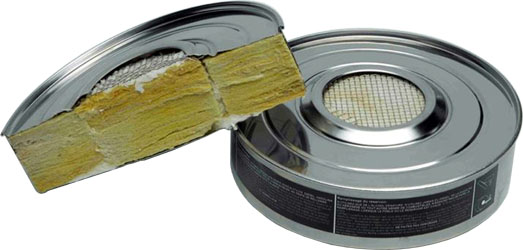
CookMate Refillable Alcohol Canister
Many stovers use wicks to hold fuel in their stoves. This makes it less likely that fuel will spill and spread flames everywhere if the stove is bumped or even knocked over. This can make a stove much safer to operate. In some cases, it even makes the stove easier to fill.
Wick Primer
Wicking material have been wrapped around stove in various configurations to allow for priming of the stove without a priming pan.
Wick Fuel Mobilizer
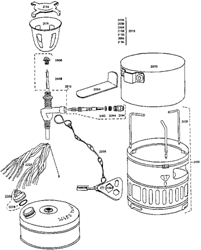
SVEA Parts Diagram - note mop head looking structure is a cotton wick
Wick have been used in conjunction with and without tubes to move liquid fuel from one area into another. Examples include wicking fuel from a fuel tank into tubes for the stove jet or even onto anther wick.
Wick Support
Wick material can be used to support a pot over a stove or hold stove parts together. Wicking fabric can be epoxied to surfaces, sewn together with heat resistant thread or even tied together to itself or other items. You can wrap a wick around your pot, and use this ridge to support your pot on a tight windscreen or potstand.
Wick Insulation
Since many wick materials used by stovers are also heat resistant, they can make excellent flame-proof/resistant insulation. You can use this to cover pots to create grab areas, make pot cozies, make stove sleeves to insulate stoves from the cold and many other high heat uses.
Wick Material
There are many popular materials used or that can be used in stove applications. Many wick material are intended for high heat applications, but even some lower temperature rated materials can be used for lower temp applications or short term applications.
Melting or Failure Points
| Material | °C | °F | Notes |
| Graphite Felt | 2000°C | 4500°F | |
| Zoltek Pyron | 2500°F | Flame Protector | |
| Silica Seals | 1260°C | 2300°F | Seals for ovens |
| Carbon Felt | 1200°C | 2192°F | |
| Asbestos | 1200+°C | 2192+°F | Cancer |
| Fiberglass | 1200°C | 2192°F | softens and degrades |
| Wool | 600°C | 1112ºF | Ignition temp |
| Kevlar | 500°C | 932°F | Doesn't melt - Degrades |
| Technora | 500°C | 932°F | Fancy Kevlar/Tech Cord |
| Vectran | 330°C | 626ºF | |
| Baking Silicone Mat | 316°C | 600°F | |
| JB Weld Epoxy | 316°C | 600°F | 10 minute exposure limits |
| Polyester | 250-300°C | 480-580°F | |
| Nylon | 190-350°C | 374-663°F | |
| Cotton | 150˚C | 300 ºF | Decomposes; Easily burns at 255˚C |
| Sisal | 150˚C | 300 ºF | |
| Manila | 150˚C | 300 ºF | |
| Spectra | 147°C | 297°F | |
| Super Glue | 82°C | 180°F | Slightly better for Hi temp super glue |
Other materials and failure points
Metal Melting Points
| Metal | °C |
| Carbon | 3730° |
| Tungsten | 3410° |
| Chromium | 1900° |
| Platinum | 1770° |
| Titanium | 1670° |
| Pure iron | 1535° |
| Cobalt | 1490° |
| Nickel | 1450° |
| Cast iron | 1200°-1350° |
| Manganese | 1260° |
| Steel | 1100°-1600° |
| Gold | 1063° |
| Copper | 1080° |
| Bronze | 1000° |
| Brass | 900°-1000° |
| Silver | 961° |
| Aluminium | 660° |
| Magnesium | 651° |
| Antimony | 630° |
| Aluminium alloy | 600° |
| Zinc | 419° |
| Electric fuses | 371° |
| Lead | 327° |
| Bismuth | 271° |
| Tin | 232° |
| Solder 60/40 | 183° |
Thread Failure Points
| Thread | °F |
| 3M Nextel 440 | 2,500 |
| 3M Nextel 312 | 2,200 |
| Quartz | 2,000 |
| Silica | 1,800 |
| Inconel Wire Inserted | 1,800 |
| Stainless Wire Inserted | 1,600 |
| S2 Grade Fiberglass | 1,400 |
| E Grade Fiberglass | 1,000 |
| Beta Grade Fiberglass | 1,000 |
| Kevlar | 750 |
| Nomex | 450 |
NOTE -
Fiberglass insulation does burn a bit and releases an odor when heated. I don't know if breathing any of the fumes released during stove operation is hazardous to your health.
Do not use closed cell foam (i.e. upholstery padding) for a wick. Closed cell foam releases poisonous ammonia gas when burned.
Asbestos can still be found and has been outlawed in most of the civilized world as its tiny fibers have been known to cause cancer.
Fiberglass Insulation
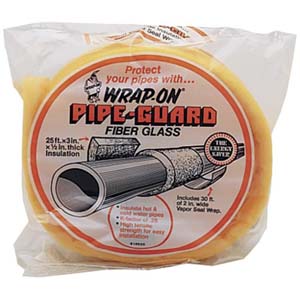
Sections can be scavenged from the walls or attics of your house or from scraps at a construction site. A more user friendly size comes in 1/2 inch thick pipe insulation and can be trimmed and stacked or rolled up.
Note: When burned, fiberglass produces a good deal of polycyclic aromatic hydrocarbon (PAH i.e. naphthalene, benzo[a]pyrene and non-naphthalene PAHs) and Volatile organic compound (VOC i.e. benzene, toluene, ethyl benzene and styrene). Fiberglass can also cause local irritation and an inhalational hazard.
epa.gov 600r02076/600sr02076.pdf
Fiberglass Wicks
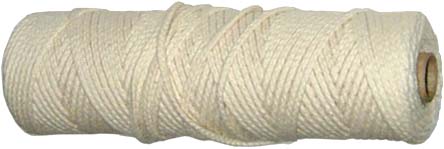
Made for lanterns or for fire shows (often Kevlar blend), these can be wrapped around stoves as an alternative to using a primer pan. fiberglass comes in cord (with various weaves) and tape of all sizes.
Fiberglass Stove Gasket
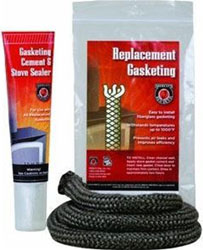
You can find various braided wicks sold as stove gaskets. These can be rather large. You may have these at your local hardware center or local stove shop.
Fiberglass Exhaust Wrap (aka Thermal Wrap, Heat Wrap, Muffler Wrap)
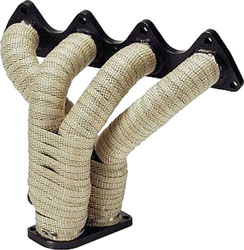
Looks great when you first wrap it around your exhaust. It wears poorly on an off-road vehicle and leave dust on trailer queens. You should be able to find this in the better autoparts shops.
Fiberglass Medical Gauze

This has resin built in and begins to harden as soon as the package is opened. Water allows you to mold it and speed up setting. It's used to make casts and splints at the doctor's office. This material may be better suited as a structural part than a wick.
Auto Body and Marine Fiberglass Cloth
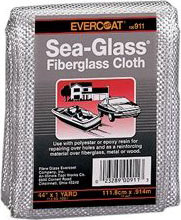
Fiberglass cloth comes in various configurations for use as auto body and marine body repair. You should be able to find this in most autopart and marine shops.
Fiberglass Drywall Tape
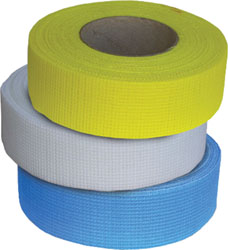
Self-adhesive fiberglass gauze. It's like using duct tape, but you will need too technique in rolling your edges, else you'll have fuzzy edges.
Kevlar Cord/Rope
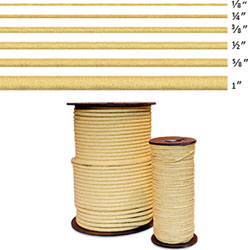
Used by fire jugglers and for other high temp applications which need a durable cord. Kevlar also comes in various sized tape, cloth and webbing for high strength, high temperature applications.
Kevlar Speargun Line
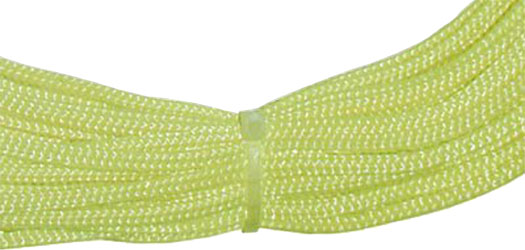
Kevlar cord is also used for spear guns.
Kevlar Thread
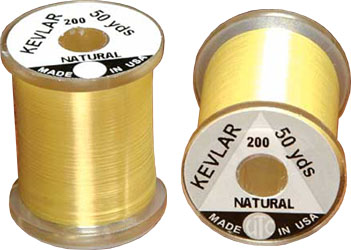
Kevlar thread has good thermal stability and retains a high percentage of room temperature properties even up to 300ºC after one to two hours exposure in air. It does not melt, or support combustion, but will oxidize at 400-430ºC. However, at temperatures as low as 196ºC Kevlar shows no loss of strength. This makes it ideal for high temperature applications. It is good for up to 320ºF continuous.
A-A-55220 & Mil-T-87128
dube.com 0.018" diameter
Alumina Thread
This is the highest temperature rated thread available. It's good for up to 2200ºF continuous.
Carbon Felt
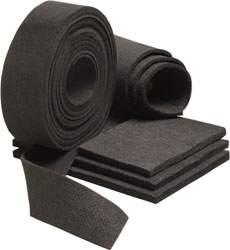
An asbestos replacement. Used for very high temp applications, such as for insulation or back drop for soldering/welding. Carbon felt will begin to slowly oxidize at approximately 300ºF and can ignite in air above these temperatures. Carbon felt is heat resistant to 1200ºC+.
ceramaterials.com graphitecarbonfelt
Graphite Carbon Felt
Even a higher temperature rating than carbon felt. Graphite felt will begin to slowly oxidize above 500 degrees F and can ignite in air above these temperatures. Graphite carbon felt is heat resistant to 2000ºC+.
ceramaterials.com graphitecarbonfelt
Zoltek Pyron Fiber Sheet
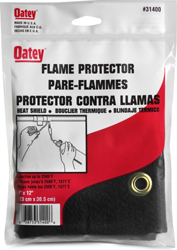
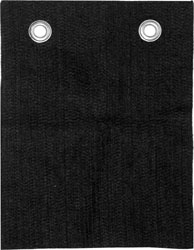
9" x 12" with grommets
This oxidized PAN fiber felt is found in the soldering and welding department of hardware stores. Good up to 2500ºF.
Perlite
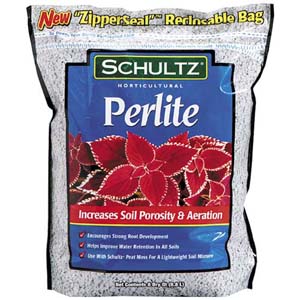
This is found in the gardening section of hardware stores and is made up of tiny volcanic rocks. This option can be very messy when used and requires metal mesh or something else to hold it in place. It may be best to use the larger pieces depending on your application and throw out the dust and small pieces. Expect to get a little (or a lot) of dust spillage.
Expanded perlite has been used at service temperatures as high as 2,000ºF (1,100ºC) and is used in high temperature applications in the steel and foundry industries such as ladle topping, hot topping and risering, in topping compounds, in exothermic and insulating shapes, as a cushioning agent, in molding sand and in the manufacture of refractory blocks and bricks.
Cotton Wicks
This is popular for candle, lantern and stove use. Cotton begins to decompose at a relatively low temperature compared to other options, but will work fine for certain applications. You should be able to find these in most candle shops and many hobby shops or bigger stores with a crafts section. And just about anything cotton can be turned into a wick.
Natural Fibers
Anything from dried moss to twisted up wood fibers can be used as a wick. This will allow you to burn just about any flammable liquid or wax you can find in the woods.
Steel Wool
Many stovers have used steel wool in various ways as a "wick". The results are mixed as the mass and presence of the steel can alter the performance of your stove, sometime increasing your own performance goals due to thermal feedback or slowing warm up - depending on how you use it. I don't see it working as a "wick" in the sense that it moves fuel into it, but maybe I've missed something interesting here. If so, please let me know. Steel wool will also readily rust once it becomes wet, unless you are using stainless steel.
Alcohol Wick Stoves
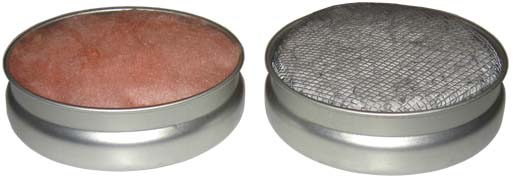
Altoids Sours Tins
See our Alcohol Wick Stoves page for more on alcohol stoves with wicks.
Candle/Wax Stoves
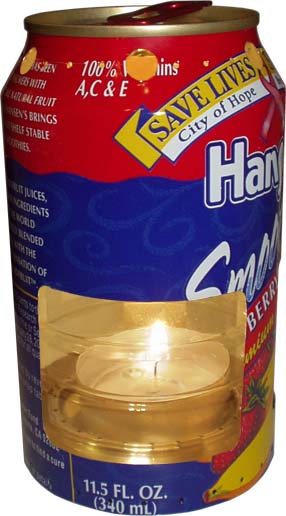
0.5oz (without tealight) Aluminum can lantern/stove
Most candles and stoves which burn wax will use some form of wick to pull fuel into a hot flame for gasification. Please review our Wax Stove Page for more on candle and wax stoves.
Petrol Wick Stoves
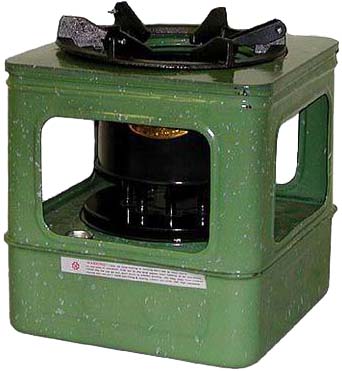
Chinese Yangzhou Hurricane NS22 kerosene stove
Wick stoves and lanterns for Kerosene and other petrol fuels have been around for a very long time. Wicks are often hidden in vaporizer tubes for many pressurized camp stoves to help draw fuel into these tubes.
See our Petrol Stove for more information.
Gas Wick Stoves
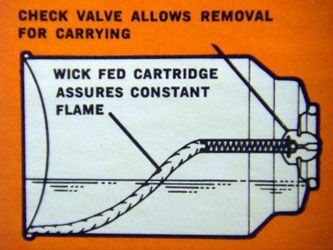
Yes, even gas stoves can use the help of wicks when temps are very low. See our Canister Stoves Page for more information on these.